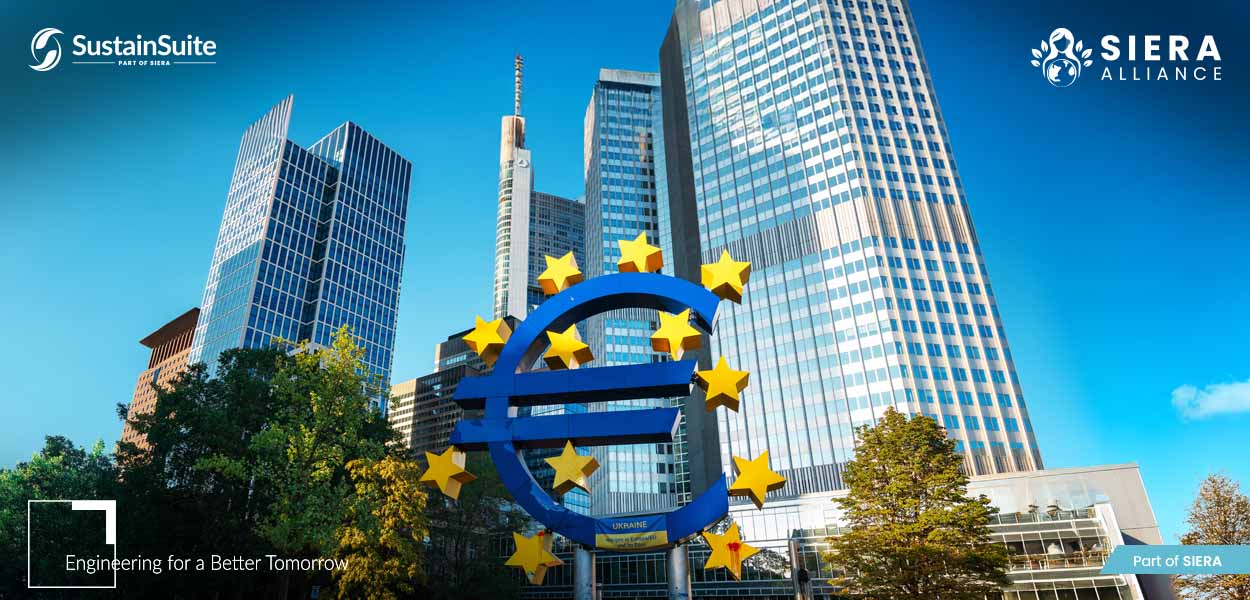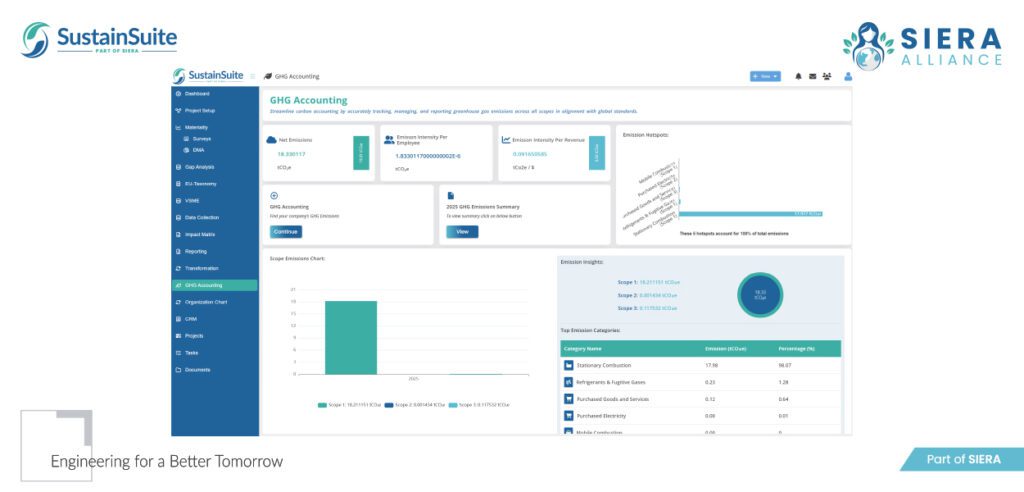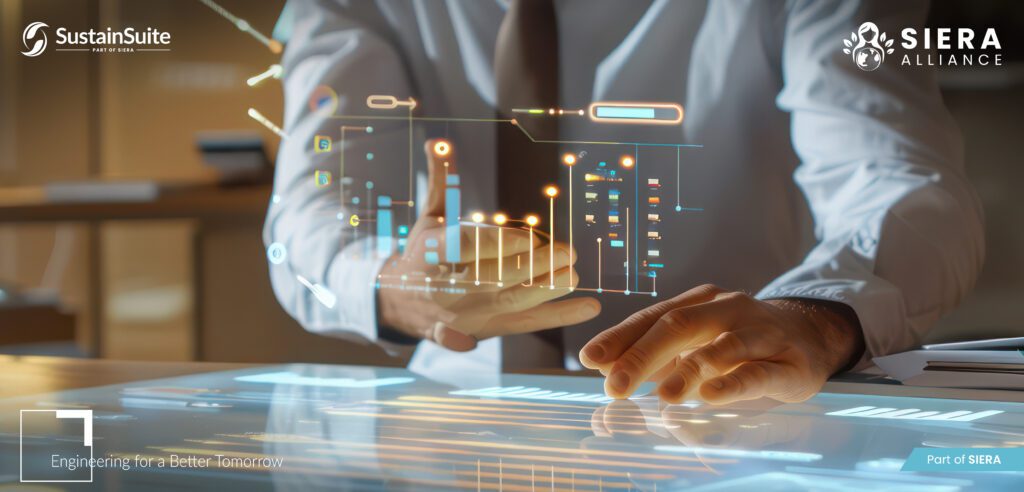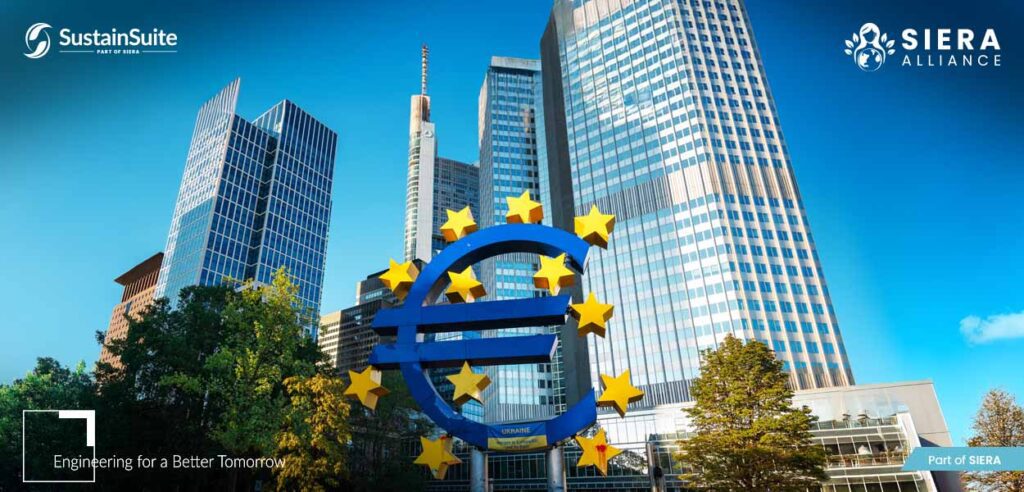As Europe races to become the world’s first climate-neutral continent by 2050, industrial activity presents itself as both, a challenge and an opportunity. While being a powerhouse of innovation, job creation and economic resilience, industry also accounts for over 20% of the EU’s greenhouse gas emissions. To maximize its benefits while limiting its pollution, the European Union unveiled the Clean Industrial Deal in February, 2025.
This bold initiative has the power to accelerate an industrial transformation that aligns climate goals with economic growth. At SustainSuite — part of SIERA — we strive to support goals like industrial decarbonization and sustainable industrial development, which support not just the objectives of the Clean Industrial Deal, but also the broader European Green Deal.
This article will explore the key tenets of the Clean Industrial Deal and highlight strategies that can help businesses remain compliant and competitive.
Key Components of the Clean Industrial Deal
The Clean Industrial Deal lays out a coordinated approach to reduce industrial emissions, enhance energy and resource efficiency, and secure global leadership in clean technologies by building on several interconnected pillars:
- Affordable, clean energy for industry
- Stronger demand for climate-friendly products
- Access to finance for green industrial projects
- Circular use of resources and raw materials
- International cooperation and clean trade
- Workforce development and job creation
This strategic mix aims to ensure that Europe’s industries remain globally competitive while transitioning toward a low-carbon future.
1. Affordable Energy for EU Industries
For the EU’s energy-intensive sectors — like chemicals, cement and steel — high energy prices remain a key barrier to industrial decarbonization. The Clean Industrial Deal addressed this by prioritizing affordable, reliable and renewable energy access as a foundation for industrial transformation.
Key strategies include:
- Scaling renewable energy: Targeted investments in solar, wind, green hydrogen and bioenergy to replace fossil fuel dependence.
- Improving energy efficiency: Tailored support for energy audits, heat recovery systems and digital tools, like SustainSuite, to optimize energy use.
- Upgrading grids: Modernizing transmission and distribution infrastructure to support flexible and clean power supply in industrial zones.
The EU also emphasizes regional cooperation to improve cross-border energy flows and reduce energy price volatility for its member states.
2. Boosting Demand for Sustainable Products
Creating markets for low-emission industrial goods is crucial to driving sustainable growth. The Clean Industrial Deal aims to stimulate demand through policies and standards that reward sustainable production. Key initiatives include:
- Green public procurement: Prioritizing low-carbon steel, cement and construction materials in EU-funded infrastructure.
- Product labelling and digital product passports: Promoting transparency around carbon footprints, recyclability and durability.
- Carbon Border Adjustment Mechanism (CBAM): Leveling the playing field by taxing imports with high embedded emissions.
By incentivizing the uptake of cleaner materials and components, the EU aims to reshape supply chains and consumer preferences toward sustainable industrial development.
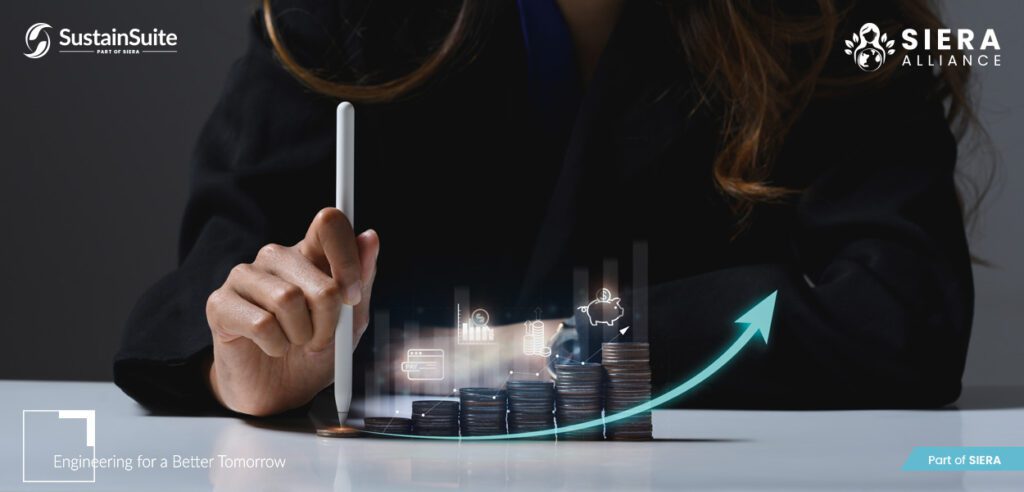
3. Financing the Clean Industrial Transition
Transforming Europe’s industrial base is a capital-intensive demand. The EU Clean Industrial Deal accounts for this by outlining a robust financial framework that blends public investment, private capital and innovation funding.
Key tools include:
- Innovation Fund: Supporting breakthrough technologies in carbon capture, clean hydrogen and industrial electrification.
- InvestEU and REPowerEU: Mobilizing begins in public-private co-investments for energy efficiency and green manufacturing.
- State aid frameworks: Allowing temporary flexibility to subsidize strategic clean tech projects under the Green Deal Industrial Plan.
The EU is also working to simplify access to financing for SMEs and scale-ups leading industrial innovation, ensuring an inclusive transition.
4. Circular Economy and Raw Material Access
A resilient, low-carbon industry cannot rely on linear production. The Clean Industrial Deal promotes a circular economy approach — where materials are reused, remanufactured and recycled — to reduce waste and emissions.
Core actions involve:
- Eco-design standards: Encouraging industrial products to be designed for longevity and material recovery.
- Waste-to-resource strategies: Transforming by-products into inputs for other industries (e.g., industrial symbiosis).
- Critical Raw Materials Act: Diversifying and securing access to essential minerals like lithium, rare earths and nickel, which are vital for batteries, magnets and clean technologies.
These measures support industrial emissions reduction by decreasing the environmental footprint of raw material extraction and processing.
5. Building Global Partnerships for Clean Industry
Due to the interconnected nature of global trade, industrial transformation will not be feasible in isolation. The Clean Industrial Deal promotes international collaboration to reduce trade-related emissions and strengthen green supply-chains.
Global initiatives include:
- Green Alliances and trade agreements: Incorporating sustainability chapters in EU trade deals.
- Export support for EU clean tech: Helping European firms scale internationally while promoting global climate action.
- Global Gateway: Investing in clean energy and industrial infrastructure in partner countries, aligning development with decarbonization goals.
By fostering mutual benefits, the EU positions itself as a standard-setter in sustainable industry while supporting the global net-zero transition.
6. Developing Skills and Creating Quality Jobs
Industrial change brings both disruption and opportunity. To avoid a workforce mismatch, the EU Clean Industrial Deal emphasizes education, reskilling and inclusive employment strategies.
Key initiatives include:
- Net-Zero Industry Academies: Vocational programs to train workers for clean tech sectors such as hydrogen, heat pumps and battery manufacturing.
- Just Transition Mechanism: Financial and social support for regions historically reliant on carbon-intensive industries.
- Partnerships with industry: Supporting apprenticeships, on-the-job training and tailored courses — like the ones offered at SIERA Academy.
This human-centered approach ensures that industrial transition will not leave its workforce vulnerable and displaced.
7. Economic and Environmental Impacts of the Deal
The Clean Industrial Deal is not just about reducing emissions, it’s also an economic strategy. By fostering industrial energy efficiency and accelerating innovation, it boosts productivity, reduces operational costs and opens new markets.
Expected outcomes include:
- Lower carbon emissions from energy-intensive industries.
- Enhanced competitiveness of the EU clean technologies globally.
- Job creation in renewable energy, cleantech and circular economy sectors.
- Reduced dependency on imported fossil fuels and raw materials.
These impacts reinforce the EU’s long-term goals of climate neutrality, economic sovereignty and social equity.
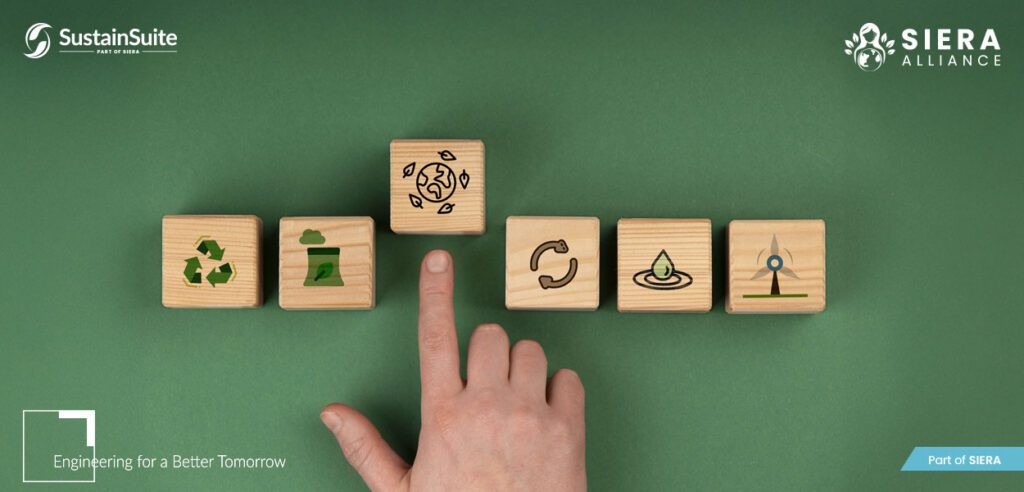

SustainSuite and the Clean Industrial Deal
Developed under the SIERA Alliance, SustainSuite helps businesses understand and implement the requirements of the Clean Industrial Deal. By offering integrated modules for energy efficiency tracking, carbon accounting, supply chain transparency and ESG reporting, SustainSuite enables companies to align operations with EU climate policies.
Whether it’s complying with digital product passport standards, assessing carbon exposure under CBAM or accessing sustainable finance opportunities, SustainSuite equips businesses with the tools and data insights they need to stay compliant, competitive and future-ready in Europe’s evolving industrial landscape.
The Future of European Industry is Clean
The Clean Industrial Deal signals a turning point in Europe’s approach to industry — not as a climate problem, but as a core part of the solution. By embracing clean energy, circularity, digitalization and global partnerships, the European Union is reshaping its industrial landscape for long-term sustainability and resilience.
As implementation progresses, the focus must remain on inclusive innovation; ensuring that no country, company or worker is left behind. If you’re ready to dive into the transition, then reach out to SustainSuite today!
FAQs
1. What is the Clean Industrial Deal?
The Clean Industrial Deal is a European Union strategy to decarbonize its industrial sector while boosting competitiveness, innovation and job creation. It focuses on clean energy access, circular economy, sustainable product demand and financing for green technologies.
2. What is the summary of Clean Industrial Deal?
The Clean Industrial Deal aims to transform Europe’s industry by promoting energy efficiency, reducing emissions, securing raw materials and creating markets for sustainable products. It supports businesses with financing, innovation and skills development to achieve climate neutrality.
3. What is Ursula von der Leyen’s Clean Industrial Deal?
Ursula von der Leyen, President of the European Commission, introduced the Clean Industrial Deal as part of the European Green Deal. Her vision focusses on aligning industrial growth with climate action, innovation and Europe’s strategic autonomy.
4. What is the Green Deal Industrial Plan?
The Green Deal Industrial Plan complements the Clean Industrial Deal by streamlining regulation, increasing funding and accelerating deployment of net-zero technologies. It includes reforms to boost cleantech manufacturing and strengthen the EU’s industrial base in the global green race.


